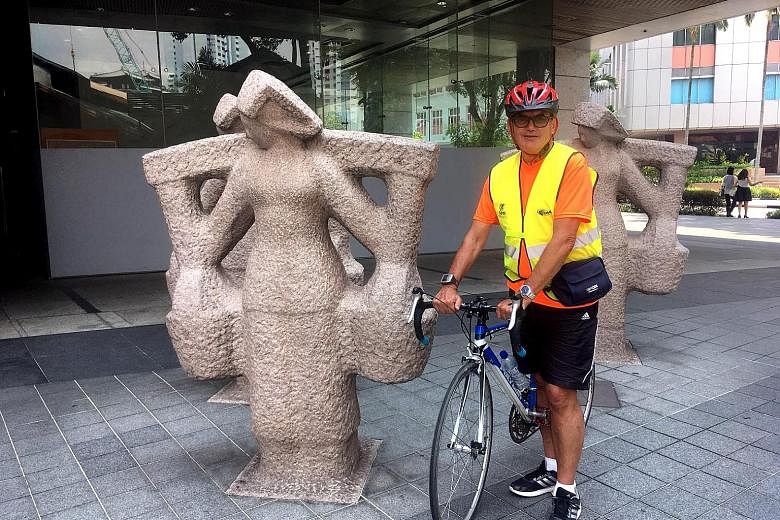Weather, terrain and scenery can vary but the least anyone expects when they sign up for a marathon, wherever it is held, is that come race day they will be running exactly 42.195km.
Runners can get "roughly 42km" any time they want in training.
What they are looking for in marathons, especially International Association of Athletics Federations-certified ones, is a time they can use to compare themselves with everyone else.
Which is why there are people like Dave Cundy, an IAAF and Association of International Marathons and Distance Races (Aims) Grade A course measurer, who specialise in marking out the 42.195km distance in different cities around the world.
"One of the great bonuses of having accurately measured courses is that we can have world records that we can rely on," said Cundy, who was in town last month for the official route measurement of Sunday's Standard Chartered Singapore Marathon (SCSM).
"This has brought a media focus to the sport of marathon running because the media can talk about expectations but in fact it was not till 2004 that the IAAF accepted world records in road marathons."
Cundy does his job with a bicycle and a device called a Jones Counter that is fixed to the bicycle's front wheel and counts the revolutions of the wheel. It was invented in 1971 by Alan Jones for the express purpose of measuring road courses.
Before Cundy started work on the SCSM course, he first calibrated his bicycle against a 300m stretch in East Coast Park measured out with steel tape.
"Now I can work out how many counts there are on the counter for each kilometre I ride on the marathon course, and I can then calculate just how far I have ridden and work out how far the course is based on that," said the 69-year-old Australian.
The Jones Counter method may sound rudimentary in an age when GPS tracking is widely available but Cundy insisted it is still the most accurate today.
"Some people think that in these days of high tech, the Jones counter is an archaic way of measuring but GPS is not accurate enough and Google Earth and other mapping systems also lack accuracy," he said.
"The accuracy of GPS is affected by trees in parks and tall city buildings. You can have 10,000 runners taking part in a race wearing a GPS watch and they will all have different readings."
The manual way is not without its challenges, however.
SCSM participants will enjoy full road closures in over 90 per cent of the routes but Cundy does not have that luxury.
"I have to measure the shortest possible route to the runners and that is hard in city streets with the traffic but of course I don't expect Singapore to close down streets just for me," he said.
The average time taken to run a marathon is around 41/2 hours but Cundy takes more than twice that time on his bicycle.
He added: "It is easy measuring on straight roads when you are riding with traffic, but for bends, I have to hit the apex of each corner.
"For example to head towards Prinsep Street along Orchard Road, I have to cut across five to six lanes of traffic in a short distance."


